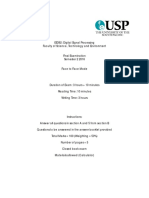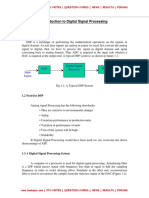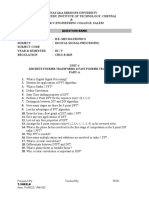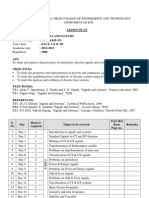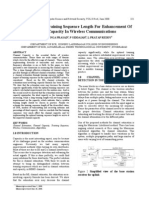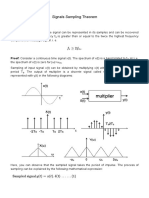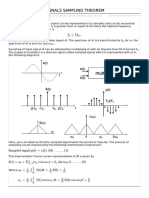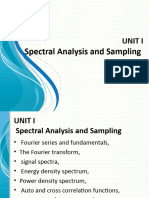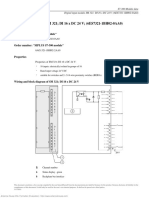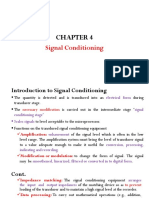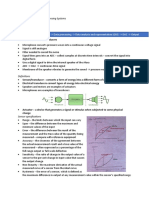0% found this document useful (0 votes)
293 views3 pagesSampling Theorem Explained
The sampling theorem states that a continuous time signal can be reconstructed from its samples if the sampling frequency is greater than twice the highest frequency component of the original signal. This ensures that no information is lost during the sampling process. The theorem is proven using Fourier series analysis, showing that sampling a signal is equivalent to multiplying it by an impulse train. If the sampling frequency meets the criterion, the original continuous signal can be recovered by inverse Fourier transformation of the sampled signal.
Uploaded by
Ravi Teja AkuthotaCopyright
© © All Rights Reserved
We take content rights seriously. If you suspect this is your content, claim it here.
Available Formats
Download as PDF, TXT or read online on Scribd
0% found this document useful (0 votes)
293 views3 pagesSampling Theorem Explained
The sampling theorem states that a continuous time signal can be reconstructed from its samples if the sampling frequency is greater than twice the highest frequency component of the original signal. This ensures that no information is lost during the sampling process. The theorem is proven using Fourier series analysis, showing that sampling a signal is equivalent to multiplying it by an impulse train. If the sampling frequency meets the criterion, the original continuous signal can be recovered by inverse Fourier transformation of the sampled signal.
Uploaded by
Ravi Teja AkuthotaCopyright
© © All Rights Reserved
We take content rights seriously. If you suspect this is your content, claim it here.
Available Formats
Download as PDF, TXT or read online on Scribd
/ 3









